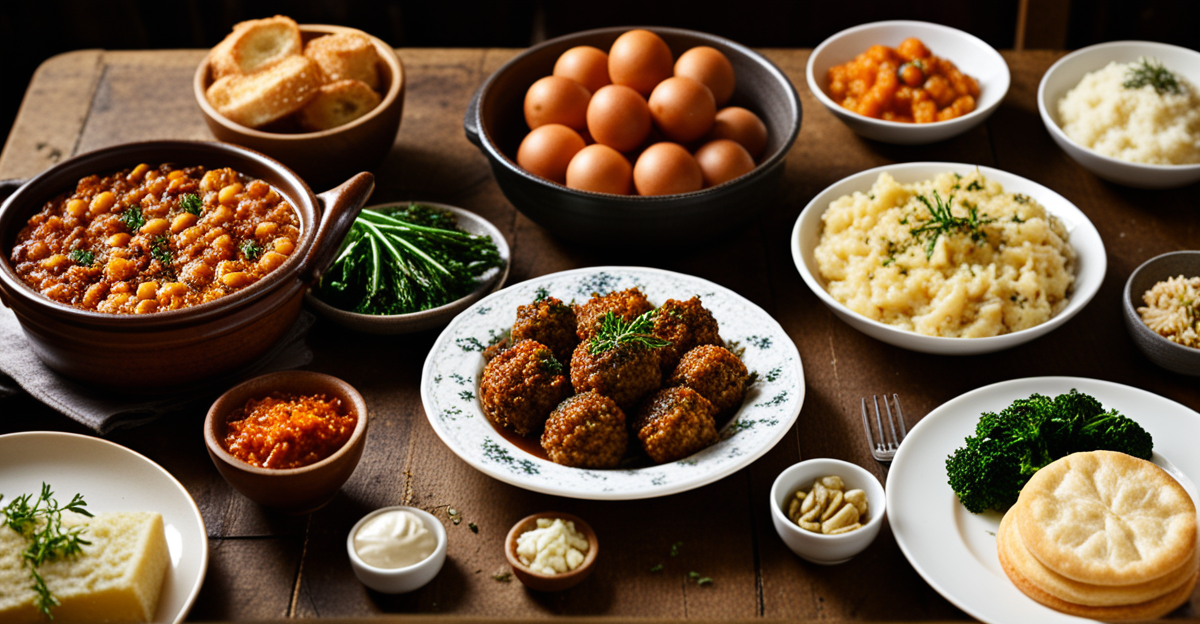Iconic British Dishes
British cuisine is renowned for its rich variety and historical significance. Traditional dishes not only tantalize taste buds, but they also provide a glimpse into the cultural fabric of the United Kingdom. Some key dishes have become emblematic of British gastronomy, and each holds a unique place in the country’s culinary heritage.
Fish and Chips: A staple in British cuisine, fish and chips is deeply embedded in the nation’s food history. Originating in the 19th century, this dish typically consists of battered and fried cod or haddock served with crispy fries. It became a cultural icon due to its widespread availability and affordability, often enjoyed at local pubs or seaside stalls.
In parallel : How do you make a traditional Eton mess with a modern twist?
Shepherd’s Pie: This comforting dish is rooted in the tradition of utilizing leftover meat. Shepherd’s Pie consists of a savoury meat filling topped with creamy mashed potatoes. Historically linked to the pastoral lifestyle, the use of lamb (or beef in some variations) highlights regional farming practices.
Sunday Roast: A quintessential part of British culinary culture, the Sunday Roast is a hearty meal traditionally served on Sundays. It usually includes roasted meat, potatoes, and an assortment of vegetables. The meal is a celebratory gathering, often enjoyed with Yorkshire pudding and gravy, symbolizing family unity and hospitality.
Additional reading : What Are the Essential Ingredients in Traditional British Recipes?
These dishes are more than mere meals; they represent the rich tapestry of British cultural heritage. Incorporating influences from various historical periods and regions, they reflect the UK’s diverse past and the longstanding traditions that continue to hold significance in everyday British life.
Essential Ingredients in British Recipes
Understanding key ingredients is crucial in mastering British cuisine. These staples not only define traditional recipes but also speak volumes about the United Kingdom’s historical and environmental influences.
British cooking primarily relies on ingredients that have stood the test of time. Potatoes, for example, play a vital role in dishes like fish and chips and shepherd’s pie. Introduced in the 16th century, they became a cornerstone of British diets due to their versatility and nutritional value. Another staple is lamb, famously used in shepherd’s pie. Raised on British pastures, its presence in many recipes reflects the nation’s agrarian roots.
Flour is indispensable too, especially in baking. Whether creating the quintessential Yorkshire pudding or a hearty bread, this ingredient brings texture and substance to various meals. Likewise, cream and butter are integral in enhancing the richness and smoothness of sauces and desserts, indicating the country’s dairy farming tradition.
These ingredients, with their distinct flavors and historical ties, bring authenticity to British dishes. Together, they encompass the genuine essence of the UK’s culinary landscape, showing how simplicity and quality make British cuisine both enduring and endearing.
Historical Context of Traditional British Cuisine
Understanding the food history of British cuisine requires exploring its diverse influences and cultural heritage. Culinary practices in the UK have been shaped by numerous historical events, from Roman invasions introducing new flavours to the Victorian era’s emphasis on formal dining and elaborate dishes.
Historical Influences on British Cooking
Roman and Viking occupations brought a variety of ingredients like herbs and meats, altering cooking methods significantly. The Norman conquest further diversified the British culinary scene, introducing spices and complex sauces. These influences laid the foundation for what would evolve into distinctive national dishes, reflecting the food history of centuries past.
Evolution of Dishes Over Time
The evolution of British dishes mirrors the nation’s history, with each era leaving an indelible mark. During the industrial revolution, accessible and affordable meals like fish and chips became popular, showcasing adaptability and resourcefulness. Additionally, the influence of the British Empire introduced exotic spices and ingredients, enriching dishes with unique and bold flavors.
Traditional Cooking Methods and Cultural Preservation
Furthermore, traditional cooking methods remain vital in preserving the UK’s rich cultural heritage. Techniques like roasting and slow cooking not only enhance flavors but also celebrate the historical links to British agrarian societies. Maintaining these methods keeps the connection to cultural roots alive and thriving for future generations. Through these practices, British cuisine continues to be a testament to a vibrant and evolving food history.
Cooking Techniques and Tips
British cuisine, known for its comforting flavours and simple preparation methods, continues to captivate food enthusiasts. When preparing traditional British dishes, understanding specific cooking methods is crucial for achieving authenticity and flavour. Whether creating a classic Sunday roast or a warming shepherd’s pie, employing these techniques can elevate the culinary experience.
Overview of Common Cooking Techniques
Traditional British cooking often employs methods such as roasting, braising, and baking. Roasting, in particular, is a technique deeply rooted in British kitchens, perfectly highlighting the natural flavours of meats and vegetables. For instance, a Sunday roast involves slow-cooking meats to tenderness while achieving a crisp outer layer, making this method a favourite for family gatherings. Braising, on the other hand, combines cooking in a small amount of liquid and slow heat, ideal for tenderizing tougher cuts of meat and infusing rich flavours.
Tips for Authentic Preparation
For those aiming to capture the essence of British cuisine, it’s essential to focus on simple, fresh ingredients. When roasting meats, ensure they are adequately seasoned and cooked at the right temperature to maintain juiciness. Additionally, incorporating natural herbs such as rosemary and thyme enhances the aroma and taste of the dish. When baking, using high-quality butter and ensuring precise measurements can lead to better texture and flavour, notably in pastries like Yorkshire pudding.
Variations in Cooking Styles
While traditional methods remain popular, regional variations and modern adaptations have emerged within British cooking. For example, the use of duck fat in roasting potatoes is a custom in certain parts, adding a unique flavour. Regional preferences can also influence the choice of meat in shepherd’s pie, with lamb preferred in some areas over beef. Understanding these variations allows for a personalized approach to creating well-loved British classics.
By embracing these cooking techniques and preparation tips, anyone can successfully produce traditional dishes that reflect the rich heritage of British cuisine.
Visual Guide to Traditional British Dishes
Visual appeal in British cuisine enhances our appreciation of its cultural heritage. Presenting dishes attractively not only pays homage to their history but also piques interest and invites diners to explore further.
Examples of Iconic British Dishes
Capturing the essence of traditional dishes through imagery is key. Consider fish and chips presented with golden-brown fish alongside freshly cooked chips, showcasing its simplicity and accessibility. Meanwhile, a well-plated Shepherd’s Pie with a golden mashed potato crust can highlight the heartiness and comfort this dish brings. Similarly, a Sunday Roast gorgeously displayed with vibrant vegetables and a rich gravy exudes a sense of communal celebration.
Ingredient Breakdowns
In understanding these dishes, an ingredient breakdown further illuminates their rich composition. For instance:
- Fish and Chips: Cod or haddock, potatoes, and batter.
- Shepherd’s Pie: Ground lamb or beef, onions, carrots, peas, and creamy mashed potatoes.
- Sunday Roast: Choice of meat, potatoes, seasonal vegetables, and Yorkshire pudding.
Suggestions for Plating and Presentation
Plating reflects British charm through its straightforwardness and warmth. Keep it simple yet elegant:
- Use wide, shallow dishes to spread out ingredients visually.
- Emphasize symmetry and vibrant accents using herbs or sauces.
- Arrange elements to highlight the dish’s main components and enhance its narrative.
With thoughtful presentation, traditional British dishes tell a vibrant story, drawing diners into the culinary tapestry of the United Kingdom.








